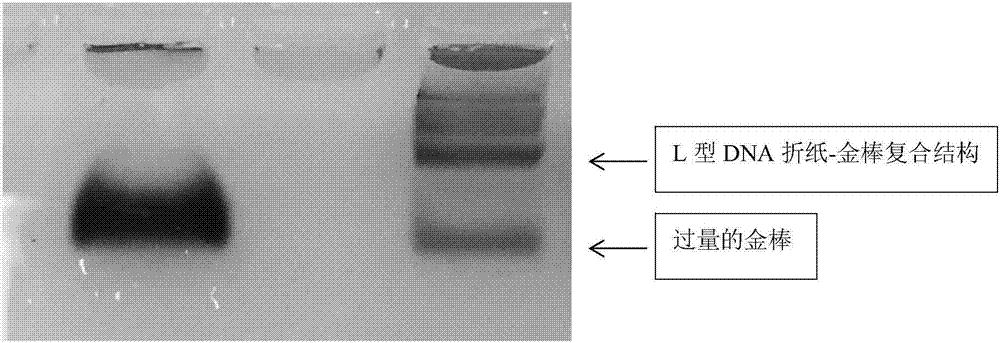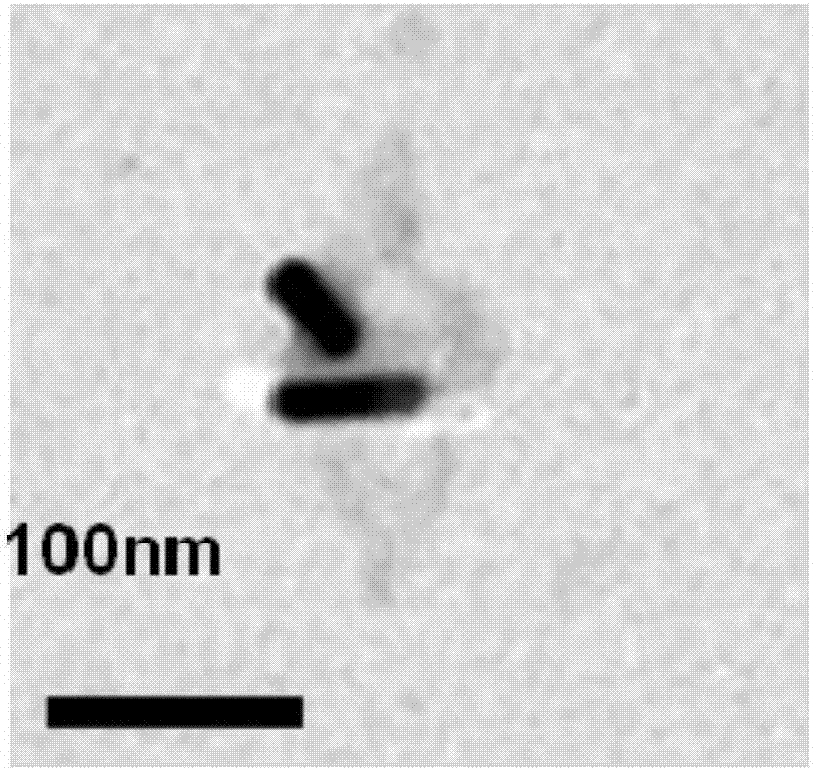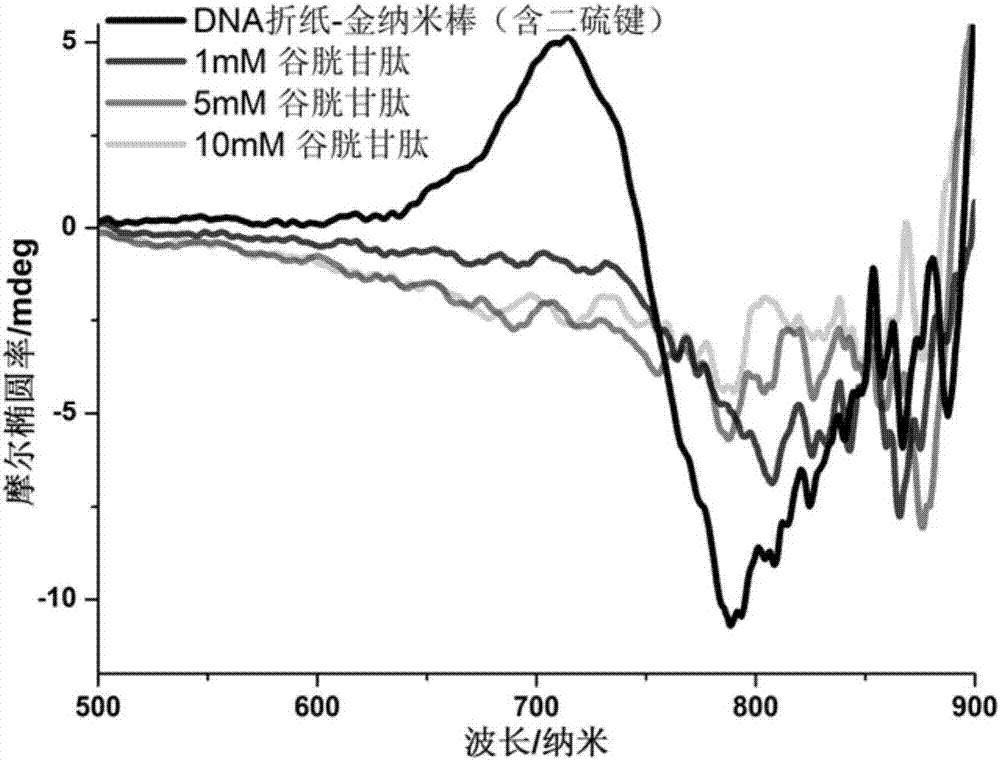Stimuli-responsive type nucleic acid nanostructure carrier chiral noble metal nanocomposite and preparation method thereof and application
A nanocomposite, nucleic acid nanotechnology, applied in the fields of nanotechnology, nanotechnology, DNA preparation, etc., can solve problems such as limited application
- Summary
- Abstract
- Description
- Claims
- Application Information
AI Technical Summary
Problems solved by technology
Method used
Image
Examples
Embodiment 1
[0061] Example 1 Preparation of nucleic acid nanostructure carrier, gold nanorod, nucleic acid nanostructure carrier-gold nanorod plasmonic chiral complex
[0062] Mix the scaffold chain:staple chain:capture chain:control chain in a molar ratio of 1:10:10:10 at 1×TAE / Mg 2+ Annealing and hybridization in PCR under the buffer system to obtain triangles I and II. The annealing condition is: slowly drop from 90°C to room temperature, and the whole process lasts for 12h. Triangles I and II were purified with a 100kD ultrafiltration column to remove excess DNA strands. Then, triangles I and II were mixed at a molar ratio of 1:1, annealed and hybridized in PCR, and the annealing conditions were: from 45°C to 25°C as one cycle, a total of 6 cycles. The triangular DNA origami used in this experiment was modified based on Rothemund's 2006 design (Nature, 2006, 440, 297-302.), and the capture strand was extended at 7 positions (5'-AAAAAAAAAAAAAAAA-original staple strand sequence -3'),...
Embodiment 2
[0074] Example 2 Glutathione Regulates Optical Chiral Signal of Stimuli-Responsive Nucleic Acid Nanostructure Carrier Gold Nanorod Complex
[0075] A disulfide bond was introduced on the control chain connecting triangles I and II, and the assembled diamond-shaped origami structure was combined with gold nanorods to form a corresponding complex. The complex was mixed with different concentrations (1, 5, 10 mM) of glutathione Peptides were incubated at 25°C for 12 h, and then separated by electrophoresis to detect the dissociation of the complex; the optical changes of the complex were detected by circular dichroism.
[0076] Circular dichroism characterization: use Jasco J-1500 circular dichroism spectrometer to characterize the chiral signal of the sample. The whole process of the instrument is under the protection of nitrogen. The scanning temperature is room temperature, the wavelength range is 500-900nm, and the cuvette light The distance is 0.5cm, the scan speed is 200nm / ...
Embodiment 3
[0078] Example 3 Restriction nuclease EcoR V regulates the optical chiral signal of the stimulus-responsive nucleic acid nanostructure carrier-gold nanorod complex
[0079] Introduce the restriction endonuclease specific recognition restriction endonuclease sequence on the control strand connecting triangles I and II The diamond-shaped origami structure assembled by introducing enzyme-cut sequences I and II was combined with gold nanorods to form a corresponding complex. After incubating the complex with EcoR V for 1 h at 37°C, electrophoresis separation was performed to detect the solution of the complex. dissociation; optical changes of the complexes were detected by circular dichroism spectroscopy.
[0080] Circular dichroism characterization: use Jasco J-1500 circular dichroism spectrometer to characterize the chiral signal of the sample. The whole process of the instrument is under the protection of nitrogen. The scanning temperature is room temperature, the wavelength r...
PUM
 Login to View More
Login to View More Abstract
Description
Claims
Application Information
 Login to View More
Login to View More - R&D
- Intellectual Property
- Life Sciences
- Materials
- Tech Scout
- Unparalleled Data Quality
- Higher Quality Content
- 60% Fewer Hallucinations
Browse by: Latest US Patents, China's latest patents, Technical Efficacy Thesaurus, Application Domain, Technology Topic, Popular Technical Reports.
© 2025 PatSnap. All rights reserved.Legal|Privacy policy|Modern Slavery Act Transparency Statement|Sitemap|About US| Contact US: help@patsnap.com



